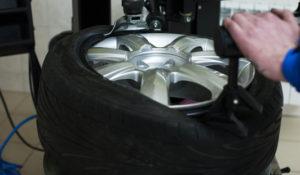
How to change a tire
Content

Replacing a flat tire on your own is easy if you follow the basic guidelines and keep these safety tips in mind.
Learning how to change a tire is a very important skill in Australia so you don't end up on the side of a distant road.
Although it may seem difficult, changing a flat tire on your own is not difficult if you follow the basic principles and keep these safety tips in mind.
Before you go
First, once a month you should check the pressure in the tires, including the spare tire. The pressure level is indicated on the tire plate inside one of the doors of your car.
Most cars only come with very basic tire change tools like a scissor jack and an allen wrench. They are often not enough to completely change a tire on the side of the road, so it is highly recommended to buy a good LED work light (with spare batteries), a hard rubber mallet to loosen overtight wheel nuts, a towel to lie down. work gloves, a piece of hardwood for jacking, and a flashing red hazard warning light.
Pop goes bus
If you are driving with a flat tire, release the accelerator pedal and pull over to the side of the road. Park far enough from the road to avoid being hit by passing traffic, and don't stop in the middle of a curve.
Tire change
1. Firmly apply the handbrake and place the vehicle in park (or in gear for a manual transmission).
2. Turn on your hazard lights, jump out and see where you parked. You want to make sure you're on a flat, level surface that isn't soft or has debris.
3. Remove the spare wheel from the vehicle. Sometimes they are located inside the cargo area, but on some vehicles they can also be attached under the rear of the vehicle.
4. Slide the spare tire under the threshold of the vehicle, near where you will be lifting. This way, if the car slips off the jack, it will fall onto the spare tire, giving you enough room to reinstall the jack and raise the car again.
5. Place a piece of wood under the threshold of the car and get ready to place the jack between it and the car.
6. Most scissor jacks have a slot in the top that fits in a specific location under the car. Check your vehicle's owner's manual for the exact location the manufacturer wants you to lift the vehicle from, as they can be in different locations on different vehicles.
7. Before lifting the vehicle off the ground, loosen the wheel nuts, remembering that "the left one is loose, the right one is tightened." Sometimes they will be very, very tight, so you may need to hit the end of the wrench with a hammer to loosen the nut.
8. After loosening the nuts, raise the vehicle off the ground until the tire is free. Be careful when removing the wheel from the hub as many wheels and tires are very heavy.
9. Put the spare wheel on the hub and tighten the nuts crosswise by hand.
10. Lower the jack so that the spare wheel is lightly on the ground, but the weight of the vehicle is not yet on it, then tighten the wheel nuts with a wrench.
11. Fully lower the jack and remove it, remembering to place the jack, support bar, flat spare tire and emergency light in their positions in the cargo area so that they do not turn into deadly projectiles during a sudden stop.
flat tire repair cost
Sometimes a tire can be fixed at a tire shop with a plug kit, but in many other cases you will have to buy a new rubber hoop. These vary from car to car and you should not change the size of the replacement tire that will fit on the wheel you removed.
Be careful
Changing a tire is a simple procedure, but it is a potentially deadly job. If you're not sure where you're staying is safe, try moving your car away from the road or onto a straight stretch of road and keep your headlights and hazard lights on so you can be easily seen.
If you don't know how to lift a car, handle a wheel, or tighten wheel nuts, get a capable friend or roadside assistance to help you.
Have you had to change a tire before? Share your experience in the comments below.

